#De monstris
Photo
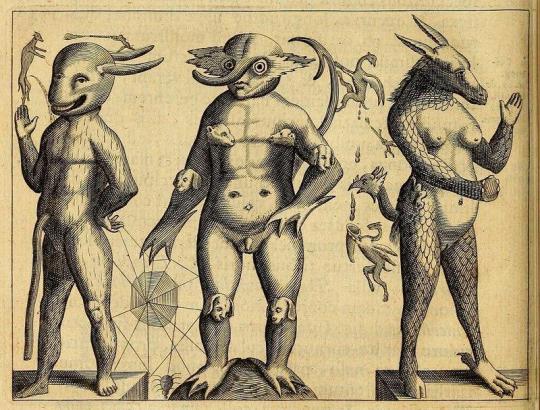
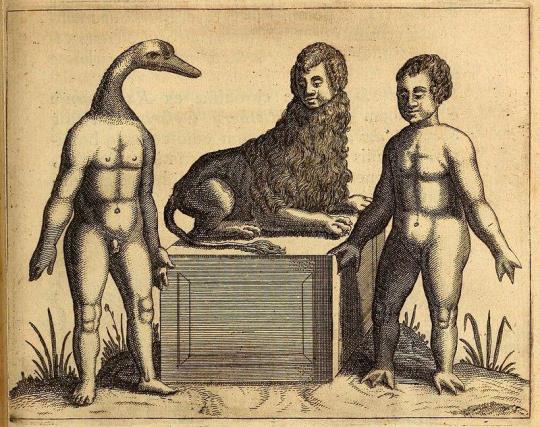

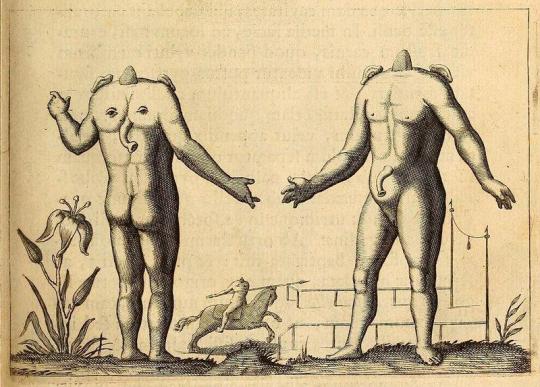
Images from the 1665 edition of Fortunio Liceti’s De Monstris, originally published, without the illustrations, in 1616. More here: https://publicdomainreview.org/collection/fortunio-liceti-s-monsters-1665
136 notes
·
View notes
Text

From Fortunio Liceti's De Monstris, 1616
Doris, Bea, and Roseanne.
19 notes
·
View notes
Text

Sula Bermúdez-Silverman De Monstris, 2023 Maize, epoxy resin, giant devil’s flower mantis (Idolomantis diabolica) 9 x 8.25 x 1.5 in 22.9 x 21 x 3.8 cm
77 notes
·
View notes
Text
A long statement about doja cat
I've been a fan of doja since the 2020 era and I've dove into her music since then.
I love how she's addressing all the hate she's gotten since she "quit music" in her new single "Attention".
I never thought her shaving her head was weird. I never thought it made her ugly. I never understood why people were so quick to jump to the conclusion that she had gone crazy and that her behavior was insanely out of the norm.
Doja has always been a silly girl. She went viral for a meme, let's get serious folks. She always posts funny pictures of herself and her tiktok account was doing numbers because of how goofy she was on there.
But because she wants to express herself in a way that appeals to her and because she wants to rock a hairstyle according to her own comfort (she said that she was never a fan of the way hair felt), now it's ok to bash her?
I would be fed up too if i were her.
people constantly want to demonize her regarding her new tattoos. people were quick to associate Lil Nas X with satanism when he came out. so of course you know a king had to do some satire shit and release montero on these haters.
the tattoos that doja got were artwork of creatures that were different. i believe doja got them because she saw herself similar to the creatures. they were misunderstood for being different but really they were just beautiful and unique.
vibe.com says "She also added an explanation noting that the figure is not 'demonic,' but actually is a symbol of imperfection. It is part of Fortunio Liceti’s 1616 artwork of 'monsters,' formally titled De Monstris. Public Domain Review—a non-profit organization dedicated to the exploration of the history of art and literature—reported, 'Licenti did not see deformity as something negative, as the result of errors or failures in the course of nature. Instead he likened nature to an artist who, faced with some imperfection in the materials to shape, ingeniously created another form still more admirable.'"
doja was really pushed to the edge with the way the media was reacting to her self-expression. and i honestly feel like she dealt with it in a good manner.
im so happy she came out with the song attention because it also shows how with the attention of being famous, there are a lot of ups and downs. we can clearly see that doja chooses to stay doing her thing because frankly, she does not care what people choose to believe about her.
"your fear is not my problem" -Dojalations 4:20
14 notes
·
View notes
Photo
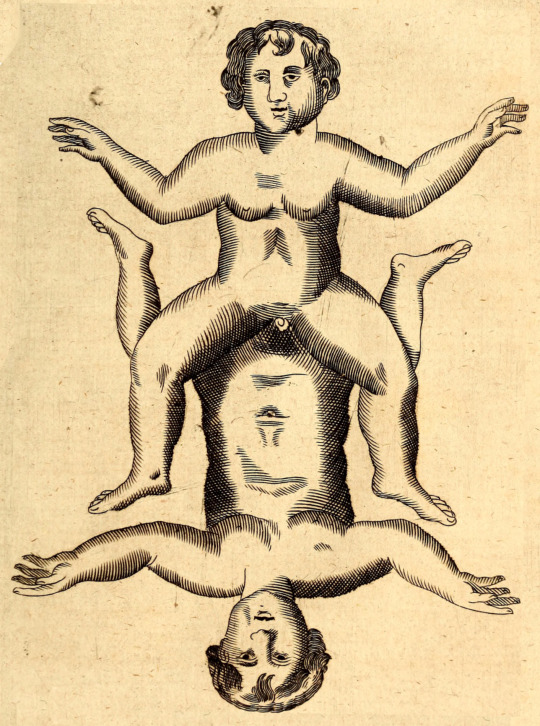
?
P. Gasparis Schotti, regis curtani Physica curiosa, sive, Mirabilia naturæ et artis libris XII. comprehensa - quibus pleraq(ue), quæ de angelis, dæmonibus, hominibus, spectris, energumenis, monstris
source
13 notes
·
View notes
Text
Two huge Books by Gaspar Schott
Physica Curiosa, Sive Mirabilia Naturæ Et Artis Libris XII. Comprehensa, Quibus pleraq;, quæ de Angelis, Dæmonibus, Hominibus, Spectris, Energumenis, Monstris, Portentis, Animalibus, Meteoris.
and Technica curiosa, sive Mirabilia artis, libris XII
“Gaspar Schott, German physicist, born 5 February, 1608, at Konigshofen; died 12 or 22 May, 1666, at Augsburg. He entered the Society of Jesus 20…
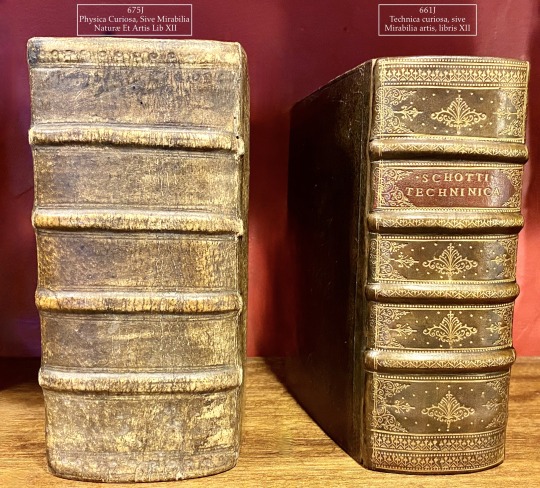
View On WordPress
#Artificial Magic#Centaur#Dragons#early printed books#Jesuit#Jesuit Science#Kircher#mechanics#Monstrous births Imaginary beings#Natural history#Otto Van Guericke#Pneumatics#Vaccume
2 notes
·
View notes
Text
¿Una de Huesos, que mienten más que las piedras del Cementerio?

Dibujo anatómico de siameses. Fortunio Liceti, De monstris, Amsterdam 1665
La edad heroica de la taxonomía biológica ya queda lejos, pero la anatomía como principio explicativo aún es bien capaz de insertar con una especial fuerza de convicción a cualquier criatura del mundo legendario en el nuestro actual.
#¿Una de Huesos que mienten más que las piedras del Cementerio?#¿Esta es la imagen y algunos datos (O no) la “Historia” la pones tú? ¡La tuya! ¿Lo harás...?
2 notes
·
View notes
Text
TAG'N (MU): Litteram "scientiam intra consilium tenuit" et punctum centrum.
TALPHA (MU): Locus sacer (et religio) aquae et somniorum. Matrix intersectio in qua fiunt mutationes cum voluntate
TANITH: Magnus Draco
TARKHAN (MU) Dominus tenebrosus, Deus tempestatis, Dominus tonitrui de montibus.
TCHO-TCHO, POPULUS (HPL): Habitat in urbe antiqua Alarar in Plateau Sung. satellites Llogor et Zhar
TIAMET (Collum Sphaerae Ain'. Leviathan. Magnus Serpens maris vel abyssus sicut alii Tamet non mortui sed somniantes. Vide Kur.
TSATHOGGUA (CAS) Etiam notus ut Zhothaqqah, Sodagui. Caput rubetae monstri simile est, totoque corpore in brevi tegitur, et vespertilio et desidiae suggestionem praebens. Tsathoggua venit a N'Kai. Hyperborii cultores Tsathoggan referunt fertilitatis cultus Hekt in Aegypto antiqua (KG. extra circulos Temporis)
TZAGESH (MU) Viae apertor, serpens tita et pugio ancipiti. Fortasse variatio majoris dei No.
UB (nec) See Ar
UBBO-SATHLA (CAS); Fons et finis. Ante adventum Zhothaqqal sive Yok-Zothoth sive Kthulhut ab astris, Ubbo-Sathla in paludibus terrae novae factae habitavit. Massa sine capite vel membra gignunt tetrae vitae prototypa. Et omnis vita terrena, ut ait "Liber Eibon", per magnum circulum temporis ad Ubbo-Sathia revertitur;
UDDU (NEC); Vide Shammash
UMUNPADDU (SAB) Iovis
UMR-AT-TAWIL (HPL): "Qui portam custodit, Isaram antiquissimam".
UR (NEC); Vide Arra.
URUKU (NEC); Septem larvae, filii inferi. Eorum locus est extra locum nostrum et inter angulos Telluris. insidiantur.
UR, ALIS (MU): Sigillum virtutis, non dissimile Voodoo maruzas in imagine, cum
<
#UR#URUKU#UMR-AT-TAWIL#UMUNPADDU#UBBO-SATHLA#TZAGESH#TSATHOGGUA#TIAMET#TCHO-TCHO#TARKHAN#TANITH#TALPHA
0 notes
Text

Sursa
Am gasit cursuri destul de bune in Republica Moldova...congrats...la ce a venit de acolo in Romania, am zis ca saracia naste doar monstri, dar nu este asa...cursuri bune...congrats...
0 notes
Text
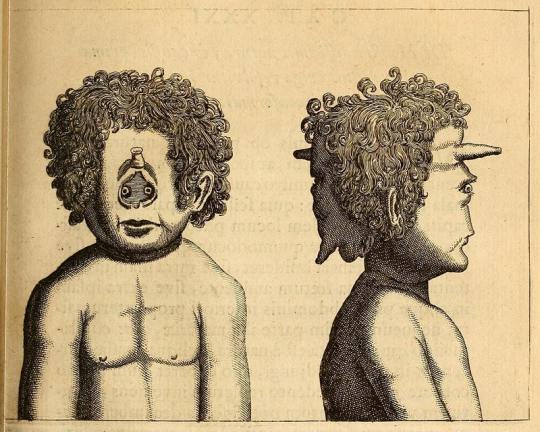
From Fortunio Liceti's 'De Monstris', 1665
4 notes
·
View notes
Photo
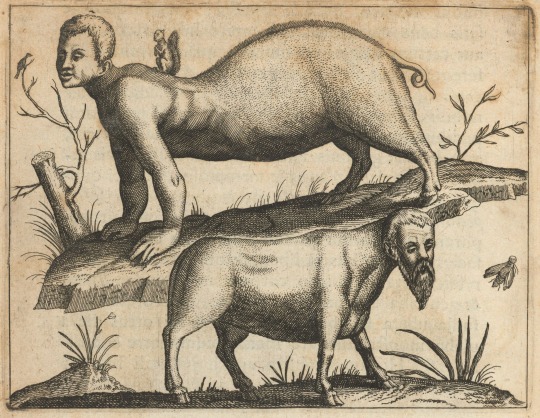
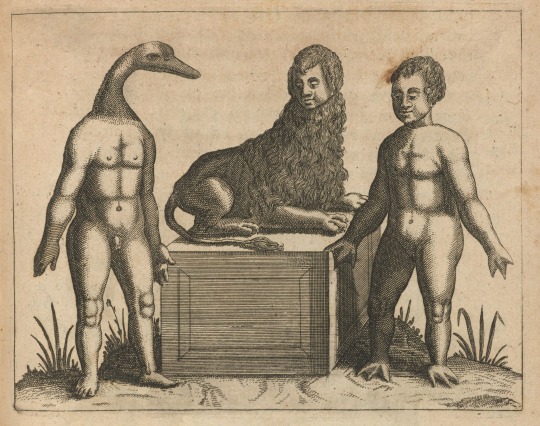
Illustration from De monstris, Amsterdam: 1665, by Fortunio Liceti (1577-1657). *IC6 L6168 616dc, Houghton Library, Harvard University
Date 1665
49 notes
·
View notes
Photo


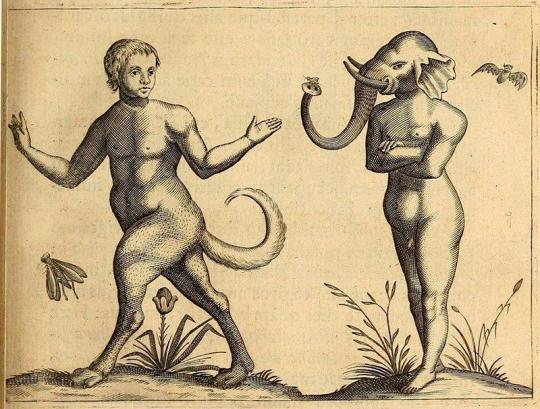
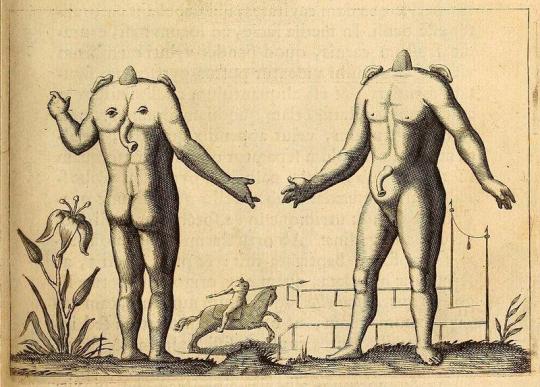
Images from the 1665 edition of Fortunio Liceti’s De Monstris, originally published, without the illustrations, in 1616. More here: https://publicdomainreview.org/collection/fortunio-liceti-s-monsters-1665
135 notes
·
View notes
Photo




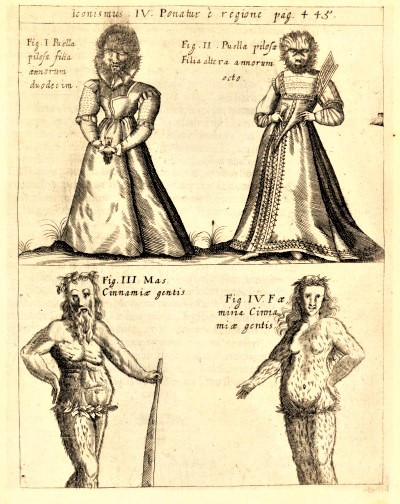



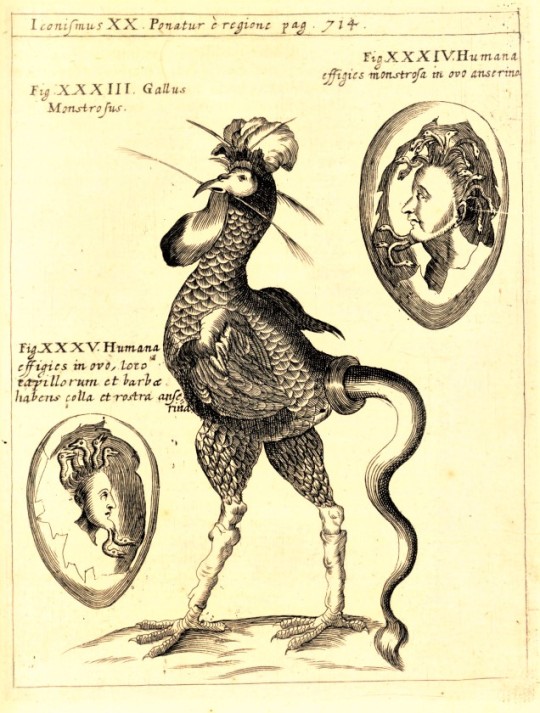

Science Saturday / Halloween Crossover
Halloween falls on a Saturday this year, and what better way to celebrate than to look at a “scientific” work about monsters, Gaspar Schott’s Physica Curiosa!
Gaspar Schott was 17th-century German Jesuit scientist whose compilations, “experiments,” and deep interest in magic occasionally led to some pretty dodgy publications of his own – much to the delight of his 21st-century readers! Such is the case with his Physica Curiosa (almost-full title below), published in Würzburg (Herbipolis) in 1662.
This two-volume set explores the physical curiosities of the known and unknown worlds, mixing (as the extended title suggests) observed fauna, flora, and astronomical phenomena with fabulous beasts, monsters, angels, demons, specters, and portents.
P. Gasparis Schotti ... Physica curiosa, sive Mirabilia naturæ et artis libris XII. comprehensa; quibus pleraque, quæ de angelis, dæmonibus, hominibus, spectris, energumensis, monstris, portentis, animalibus, meteoris, &c. rara, arcana, curiosaq́ue circumferuntur, ad veritatis trutinam expenduntur, variis ex historia ac philosophia petitis disquisitionibus excutiuntur, & innumeris exemplis illustrantur ...
You can browse a digital copy of Physica Curiosa online through the Internet Archive! Which seems like a great Halloween activity. There is also a full moon tonight! SPOOKY!
HAPPY HALLOWEEN!
View our other posts about Physica Curiosa.
View other Halloweeny-like posts.
View more Science Saturday posts.
-- Sarah, Special Collections Graduate Intern
#Science Saturday#Gaspar Schott#Physica Curiosa#scientific illustration#monsters#engravings#copperplate#etchings#science#naturalist#natural history#natural philosophy#17th century#early science#history of science#Halloween#holidays#spooky#pagefrights#Sarah#Sarah Finn
263 notes
·
View notes
Photo

#prieteni#falsi#cuvinte#amor de cuvinte#istorie#cuvantul#ingeri#oameni#demoni#monstri#drogat#sentimente#modalitate#quotes#citate#arta#tablou#photo#photography#photography quotes#art
220 notes
·
View notes
Text
LINGVA LATINA - CAPITVLVM PRIMVM
Mi ĵus legis la unuan ĉapitron de la libro, kaj, kiel mi diris antaŭe, kiam mi komentis pri la libro, mi komentos kion mi lernis kaj miajn unuajn impresojn.
La nomo de tiu ĉapitro estas «Imperium Romanum»

Bone, kiel mi ankaŭ diris en antaŭe afiŝo pri la latina, tio libro instruas la latinan, sed latine. La ĉefa rimedo uzata por instruado estas historio mem, kun elementoj tre bone strukturataj inter si, ĉar nenio kio okazas komence, eĉ la partoj de vortprovizo plej baza, estas hazarda en la rakonto kaj en lecionoj sekvaj entute. La legado estas tre facila kaj simpla, parolante, en tiu ĉapitro, pri de kie ĉiu loko estas. Ekzemple: «Roma estas en Italio. Italia estas en Eŭropo» (kompreneble, latine). Ĝi enmetas novajn parolojn iom post iom. Ekzemple, komence ni havas nur la verbon «est», sed tiam ĝi enmetas «sunt», ĝia pluralo. Kaj oni povas perfekte kompreni ĝin, eĉ se la homo ne sciis antaŭe, ke ĝi estas la pluralo, pro la kunteksto de la frazo. Vidu:
«Graecia in Europa est. Italia et Graecia in Europa sunt»
Kompreno estas tre facila, ĉefe pro la didaktika organizado de la materialo, senĉesaj ekzercoj pri kompreno teksta, verkado, traduko kaj gramatiko, komparoj inter situacioj kaj nombro granda de ekzemploj al kiuj la leganto estas elmetita.
Ĉiuokaze, tio estis enkonduko pri kiel estas strukturita la libro. Nun ni vidu kio estas instruita en tiu ĉapitro.
Kaj sekve (poste la lasta frazo kiun mi uzis) nova vorto aperas: «quoque (ankaŭ)»: «Hispania quoque in Europa est»
La tekstoj daŭras tiel, aldonante novajn vortojn. La bazaj, ne, sed, kie... Ankaŭ aperas la unuan demandon, kiu estas farita de malsama maniero en la latina.
La unua adjektivo
Kaj tiam estas montrita la unuan adjektivon en la libro: magnus (granda). Kaj ĝia malo: parvus (malgranda).
Estas ankaŭ montrita la pluralajn formojn de ĉiu termo en la latina. Oni scias ke la latina havas tri genrojn, kaj ĉiu genro havas sian finaĵon: -us (vira), -a (ina) kaj -um (neŭtrala). Ĉiu paĝo, flanke, de la libro havas konsiliojn, kiuj helpas vin kompreni kion vorto signifas aŭ la koncepto de io:
Ĝi monstris al mi kiel mi skribas tiujn vortojn plurale.

Kune kun tiu, ĝi montras ke la adjektivo deklinaciiĝi kiel deklinaciiĝas la substantivoj. Kiel montras la foto supre: «insula magna; insulae magnae»
Denove, mi scias ke estas ekceptoj. Ne ĉiuj adjektivoj deklinaciiĝas kiel la substantivo. Tamen, ankoraŭ ekzistas ŝablono.
Litterae et Numeri (Leteroj kaj nombroj)
Jes, nombroj. Ĝi introdukas la unuajn tri nombrojn: unus, duo kaj tres. Kaj ankaŭ mille. Kune kun leteroj: A, B kaj C, kie, flanke, ĝi montras kiel ilin prononci:

La maniero kiun la libro havas por instrui estas tre interesa. Ni povas resumi ĝin per unu vorto: ripeto. Ĝi ripetas la novajn vortojn kiujn ĝi montris antaŭe, igante nin lerni kaj memorigi kiel uzi vorton. Mi kredas ke la plej bona maniero por montri ĝin estas montrante frazon de la libro:
«I et II numeri sunt. III quoque numerus est. I, II, III numeri Romani sunt. I et II sunt parvi numeri. CIƆ magnus numerus est.»
Ĉu vi vidas kiel simpla kaj intuicia estas ĝia instrumaniero?
Ordonombroj
Tiam ĝi montras la ordonombrojn. Kaj kiel ĝi uzas por instrui kiu legas? Krom ripeto, ĝi konstruas frazojn laŭ intuicia maniero. Vidu:
«A et B litterae sunt. C quoque littera est. A, B, C sunt tres litterae. A est littera prima (I), B littera secunda (II), C littera tertia (III).»
Poste ĝi uzas la samajn vortojn, sed en malsama situacio.
Nombroj ankaŭ deklinaciiĝas
Do, ni havas la frazon:
«In vocabulo (lokativa formo de «vocabulum») non sunt tres litterae et una syllaba»
Por klarigi, ĝi montras flanke: «unus -a -um = I (1)» Tio estas, la vorto unus deklinaciiĝas laŭ la genro al kiu ĝi rilatas.
Grammatica Latina
Kiel la supre nomo diras, la libro parolas pri latina gramatiko. Unue, prezentante vortojn singularis et pluralis. Se hazarde la leganto ne komprenas tiujn vortojn, li povas kompreni la signifon de tiuj vortoj per la sekva teksto:
«[A] Nilus fluvius magnus est.
Nilus et Rhenus fluvii magni sunt.
'Fluvius' singularis est. 'Fluvii' pluralis est.»
Nun oni povas facile kompreni kion singularis kaj pluralis signifas.
Ekzercoj
Fine de la ĉapitro, estas donita ekzerco por vi solvi. 3 ekzercoj. 2 kie vi devas kompletigi nekompletajn vortojn, kaj 1 kie vi respondas demandojn.
Multaj vortoj
Do estas montritaj, flanke, kiom da vortoj novaj aperis. Nur en ĉi tiu ĉapitro, vi havas 42 vortojn. Vortoj kiujn la libro donas al vi en tre natura maniero, ke vi probable ne rimarkus la kvanton da vortoj kiujn vi lernis.
Nun, mi skribos frazon uzante la vortojn kiujn mi lernis en tiu ĉapitro: Multa vocabula sunt. (Mi esperas ke ĉi tiu frazo estas ĝusta haha)
#Lingua Latina#Lingua Latina Per Se Illustrata#Latin#Latin Language#Learning Latin#Esperanto#Esperanto Language#Latin book
13 notes
·
View notes
Text
Two huge Books by Gaspar Schott
Physica Curiosa, Sive Mirabilia Naturæ Et Artis Libris XII. Comprehensa, Quibus pleraq;, quæ de Angelis, Dæmonibus, Hominibus, Spectris, Energumenis, Monstris, Portentis, Animalibus, Meteoris.
and Technica curiosa, sive Mirabilia artis, libris XII
“Gaspar Schott, German physicist, born 5 February, 1608, at Konigshofen; died 12 or 22 May, 1666, at Augsburg. He entered the Society of Jesus 20…

View On WordPress
#Artificial Magic#Centaur#Dragons#early printed books#Jesuit#Jesuit Science#Kircher#mechanics#Monstrous births Imaginary beings#Natural history#Otto Van Guericke#Pneumatics#Vaccume
0 notes